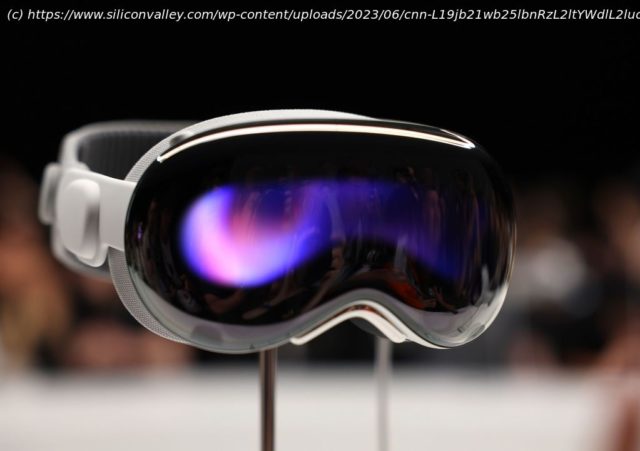Array
It’s rare to find a new technology that feels groundbreaking. But last night, while sitting on a couch in a private demo room at Apple’s campus wearing its newly announced Vision Pro mixed reality headset, it felt like I’d seen the future — or at least an early and very pricey prototype of it.
In the demo, which lasted 30 minutes, a virtual butterfly landed on my finger; a dinosaur with detailed scales tried to bite me; and I stood inches away from Alicia Keys’ piano as she serenaded me in a recording studio. When a small bear cub swam by me on a quiet lake during another immersive video, it felt so real that it reminded me of an experience with a loved one who recently passed away. I couldn’t wipe the tears inside my headset.
Apple unveiled the headset, its most ambitious and riskiest new hardware offering in years, at a developer event earlier in the day. The headset blends both virtual reality and augmented reality, a technology that overlays virtual images on live video of the real world. At the event, Apple CEO Tim Cook touted the Vision Pro as a “revolutionary product,” with the potential to change how users interact with technology, each other and the world around them. He called it “the first product you look through, not at.”
But it’s clearly a work in progress. The apps and experiences remain limited; users must stay tethered to a battery pack the size of an iPhone with just two hours of battery life; and the first minutes using the device can be off-putting. Apple also plans to charge $3,499 for the device when it goes on sale early next year – more than had been rumored and far more than other headsets on the market that have previously struggled to gain wide adoption.
With its loyal following and impressive track record on hardware, Apple may be able to convince developers, early adopters and some enterprise customers to pay up for the device. But if it wants to attract a more mainstream audience, it will need a “killer app,” as the industry often refers to it -— or several.
Based on my demo, Apple still has a long way to go, but it’s off to a compelling start.
Hours after the keynote event, I arrived at a building on Apple’s sprawling Cupertino, California, campus specifically constructed to stage demos and briefings for the new headset.
I was met by an Apple employee who scanned my face to help customize the fit of the headset. Then I entered a small room where an optometrist asked if I wore glasses or corrective lenses. I had gotten Lasik surgery years ago, but others around me had their glasses scanned so the headset could present their specific prescription. It’s an incredible feat that differentiates Apple from competitors and ensures no frames need to be squeezed into the headset.






